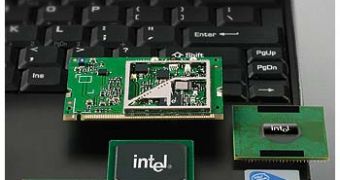There are only two processor manufacturers in the entire world and they have been competing for market shares and customers for both the desktop and the mobile computing segments. On both the desktop and the mobile market segments, Intel is the "king of the hill" for now but troubled times lie ahead for the giant chip manufacturer as its smaller rival, AMD, is preparing the launch of an entire new class of processors, based on the Barcelona quad core architecture. AMD plans to retake the performance crown from Intel on both the desktop and on the mobile computing platforms. The first new AMD processors will be desktop based and they will come out sometime in August. For the mobile computing segment, the new Turion processors from AMD are representing a serious threat to the Santa Rosa platform, even more since AMD will launch an improved version of its mobile computing platform in 2008 under the name "Puma". Laptop buyers know well Intel's Santa Rosa and Centrino brands as they appear on every Intel centered laptop made in the past few years that includes an Intel processor, motherboard chipset and wireless adapter.
Centrono can now be considered a mature platform in its own right as the fourth generation of Centrino products hit the market in May under the sales name "Centrino Duo" also known as Santa Rosa. The processors that make up the Santa Rosa line, codenamed 7100, 7300, 7500 and 7700, are all based on the dual core architecture and are much faster than the previous generations of Intel mobile processors. The fact that they communicate with the rest of the system using a fast 800MHz frontside bus does not hurt either. But according to Peter Knaak, a computer expert with the Berlin-based Stiftung Warentest, who is cited by the site TechnologyNews the Sanata Rosa new processors are very energy efficient: "When they are not operating at full capacity, they are even better at conserving energy". Unfortunately, the 965 chipset almost make the processors energy saving features go unnoticed as it need quite a lot of power. "Santa Rosa saves a few watts with its processor, but the chip is hungrier".
Another typical feature found in every laptop that sports the Centrino Duo logo is the 4965 AGN WLAN adapter that supports even the still unfinished n-standard for wireless networks. This new standard for wireless networks specifies a higher bandwidth and a stronger signal that are being translated in higher networking speeds and an increase in data transmission quality. All in all, Intel created a strong mobile computing platform that integrates just about everything from a processor to a networking adapter, but without specifying a standard video hardware adapter, as most laptop users are not interested in much 3D performance.
Trying to regain its foothold on the mobile market, AMD seems to opt for the same general strategy: a dedicated processor line ranging from low end for general use laptops to high end powerful processors that will be housed in equally powerful machines; a dedicated motherboard chipset and one or more graphics cards to choose from. According to AMD, Puma will be the "first ground-up notebook platform, with mobile-specific integrated Northbridge architecture" made entirely by the company. "Another interesting idea is the PowerXpress feature that will allow users to run a discrete graphics card when powering from the main grid and an integrated one when on battery in order to save power and increase battery life".
It remains to be seen what platform customers will like best, but as Peter Knaak said, the Centrino platform must expect some competition from AMD's Puma: "If I was buying a laptop right now, I would skip the Santa Rosa. It has a lot of pro's and con's".

 14 DAY TRIAL //
14 DAY TRIAL //